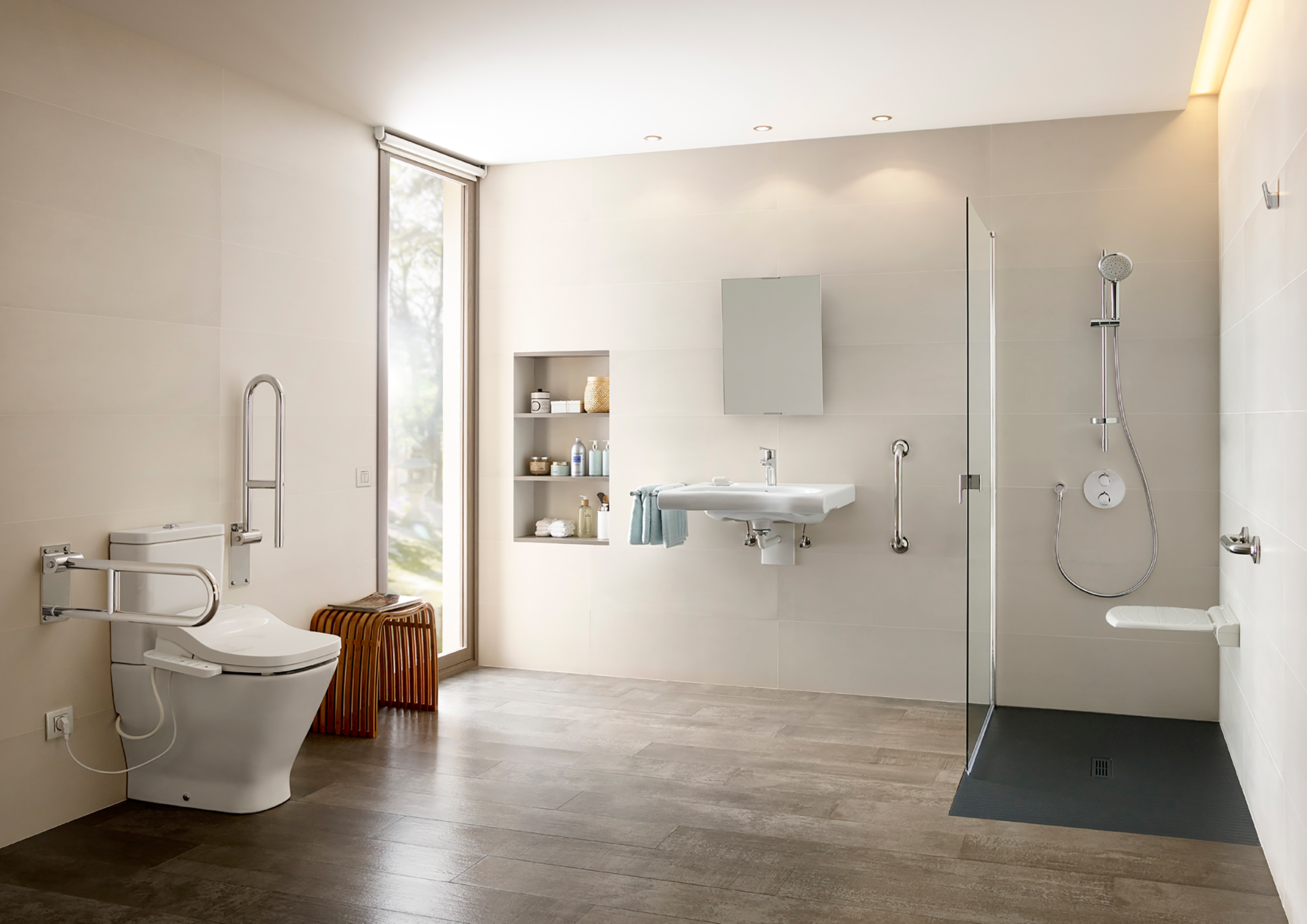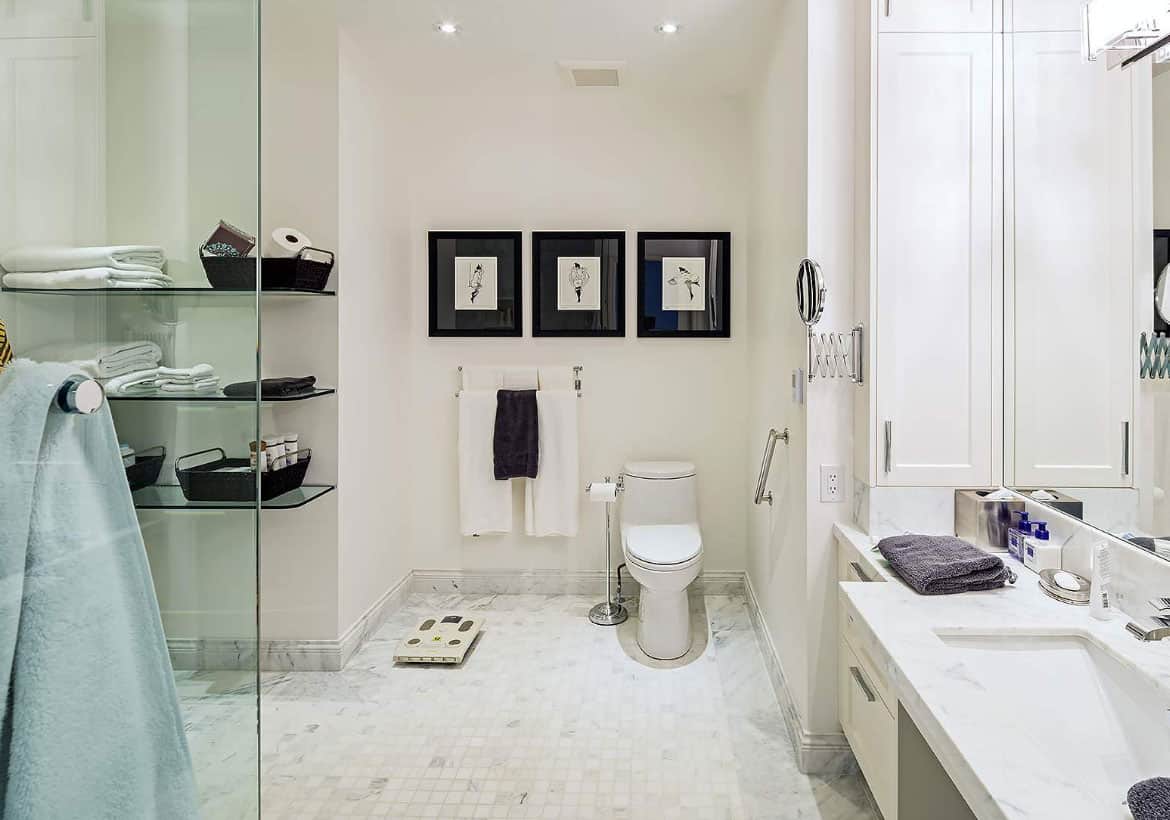Key Design Elements for Aging in Place Bathrooms

Designing a bathroom for aging in place requires careful consideration of safety, accessibility, and comfort. The goal is to create a space that allows individuals to maintain their independence and quality of life as they age. This involves incorporating features that prevent falls, ease movement, and provide a sense of security.
Non-Slip Flooring
Non-slip flooring is crucial for preventing falls, especially for seniors who may have balance issues or are prone to dizziness. A variety of materials can be used, each with its own benefits and drawbacks.
- Ceramic Tile: Durable and easy to clean, but can be slippery when wet.
- Porcelain Tile: Similar to ceramic tile but more resistant to scratches and stains.
- Natural Stone: Elegant and durable, but can be porous and require sealing.
- Vinyl Flooring: Soft and comfortable underfoot, but can be less durable than tile.
- Rubber Flooring: Offers excellent slip resistance and is often used in wet areas like showers.
It is essential to choose a flooring material with a high coefficient of friction (COF), which measures the resistance to slipping. A COF of 0.6 or higher is recommended for wet areas.
Grab Bars
Grab bars provide crucial support for balance and stability, particularly when getting in and out of the shower or bathtub. They should be installed in strategic locations, such as near the toilet, shower, and bathtub.
- Placement: Grab bars should be positioned at a height that allows for a firm grip, typically between 33 and 36 inches from the floor.
- Material: Stainless steel is a popular choice for grab bars due to its durability and resistance to corrosion.
- Installation: It is essential to ensure grab bars are securely installed into the wall studs for maximum support.
It is recommended to install grab bars on both sides of the toilet, near the shower or bathtub, and at the entrance of the bathroom.
Adequate Lighting
Proper lighting is essential for safety and visibility, especially for seniors who may have age-related vision changes.
- Brightness: Bathrooms should have ample light to illuminate all areas, including the shower and toilet.
- Placement: Lighting should be placed strategically to minimize shadows and glare.
- Types: A combination of overhead and task lighting is recommended.
Consider installing motion-activated lights in the bathroom for added safety and convenience.
Spacious and Accessible Bathroom Layout
Creating a spacious and accessible bathroom layout is essential for ease of movement and safety.
- Clear Pathways: Ensure that pathways are wide enough for a wheelchair or walker to maneuver easily.
- Turn Radius: Provide ample turning radius in the bathroom to allow for easy movement.
- Shower Access: Consider a walk-in shower with a low threshold or a roll-in shower for wheelchair access.
A well-designed bathroom layout can significantly enhance safety and independence for seniors.
Materials and Fixtures
Choosing the right materials and fixtures can make a significant difference in the functionality and aesthetics of an aging in place bathroom.
- Toilet: Consider a raised toilet seat for easier access and a comfort-height toilet for improved posture.
- Shower: A walk-in shower with a seat or a roll-in shower provides greater accessibility.
- Sink: A vanity with a lower sink height makes it easier to reach.
- Faucet: Lever-style faucets are easier to operate than traditional knobs.
- Storage: Utilize accessible storage solutions, such as pull-out drawers and shelves, to make it easier to reach items.
These materials and fixtures are designed to enhance comfort, safety, and independence for seniors.
Creating a Functional and Stylish Aging in Place Bathroom: Aging In Place Bathroom Design

An aging-in-place bathroom should be a safe, accessible, and comfortable space that promotes independence and enhances quality of life. It is essential to strike a balance between functionality and aesthetics, ensuring that the design caters to the needs of older adults while maintaining a stylish and welcoming ambiance.
Designing a Functional and Accessible Layout
A well-designed bathroom layout is crucial for safety and ease of movement.
- Wide doorways and hallways: Ensure doorways are at least 32 inches wide to accommodate wheelchairs and walkers. Hallways should be at least 36 inches wide for easy maneuverability.
- Non-slip flooring: Choose slip-resistant flooring materials like ceramic tile, rubber mats, or textured vinyl. Avoid smooth surfaces that can lead to falls.
- Grab bars: Install grab bars near the toilet, shower, and bathtub for support and stability. Grab bars should be securely mounted to the wall studs and have a diameter of at least 1 1/4 inches.
- Walk-in shower: Consider replacing a traditional bathtub with a walk-in shower, which eliminates the need to step over a high tub edge. A shower seat can be installed for added comfort and safety.
- Raised toilet seat: A raised toilet seat can make it easier to sit down and stand up, reducing the risk of falls.
Incorporating Stylish Design Elements, Aging in place bathroom design
While prioritizing accessibility, it is equally important to create a bathroom that is visually appealing and reflects the homeowner’s personal style.
- Color palette: Choose a color palette that is both calming and invigorating. Light colors can make the space feel larger and brighter, while warm tones can create a cozy atmosphere. Consider using contrasting colors for features like grab bars and shower seats to enhance visibility.
- Lighting: Adequate lighting is essential for safety and visibility. Install multiple light sources, including overhead lights, task lighting for the vanity area, and nightlights for easy navigation at night.
- Storage solutions: Choose storage solutions that are accessible and easy to use. Cabinets with pull-out shelves, drawers with soft-close mechanisms, and open shelving can help maximize storage space while minimizing strain on joints.
- Decorative elements: Incorporate decorative elements that add personality and style to the bathroom. Wall art, plants, and decorative towels can enhance the overall ambiance.
Innovative Bathroom Fixtures and Technologies
Several innovative bathroom fixtures and technologies are designed to enhance accessibility and comfort for aging adults.
- Smart toilets: Smart toilets feature automatic flushing, heated seats, and adjustable height settings, providing enhanced comfort and convenience.
- Touchless faucets: Touchless faucets eliminate the need to turn knobs or handles, making them easier to use for people with limited hand mobility.
- Shower heads with adjustable settings: Shower heads with adjustable settings allow users to control water pressure and temperature for a more comfortable showering experience.
- Digital thermostats: Digital thermostats allow for precise temperature control, ensuring a safe and comfortable bathing environment.
Aging in place bathroom design focuses on creating a safe and accessible space for individuals as they age. A well-lit bathroom with non-slip flooring is crucial, but incorporating a splash of color can also enhance the mood and create a welcoming atmosphere.
Consider a bold and calming hue like royal blue bathroom paint to add a touch of sophistication and tranquility to your aging in place bathroom design.
Aging in place bathroom design often prioritizes safety and accessibility, but that doesn’t mean sacrificing style. A fun trend to consider is incorporating pops of color with a pops friday bathroom painting , which can add personality and vibrancy without overwhelming the space.
This approach can help create a bathroom that is both functional and aesthetically pleasing for all ages.